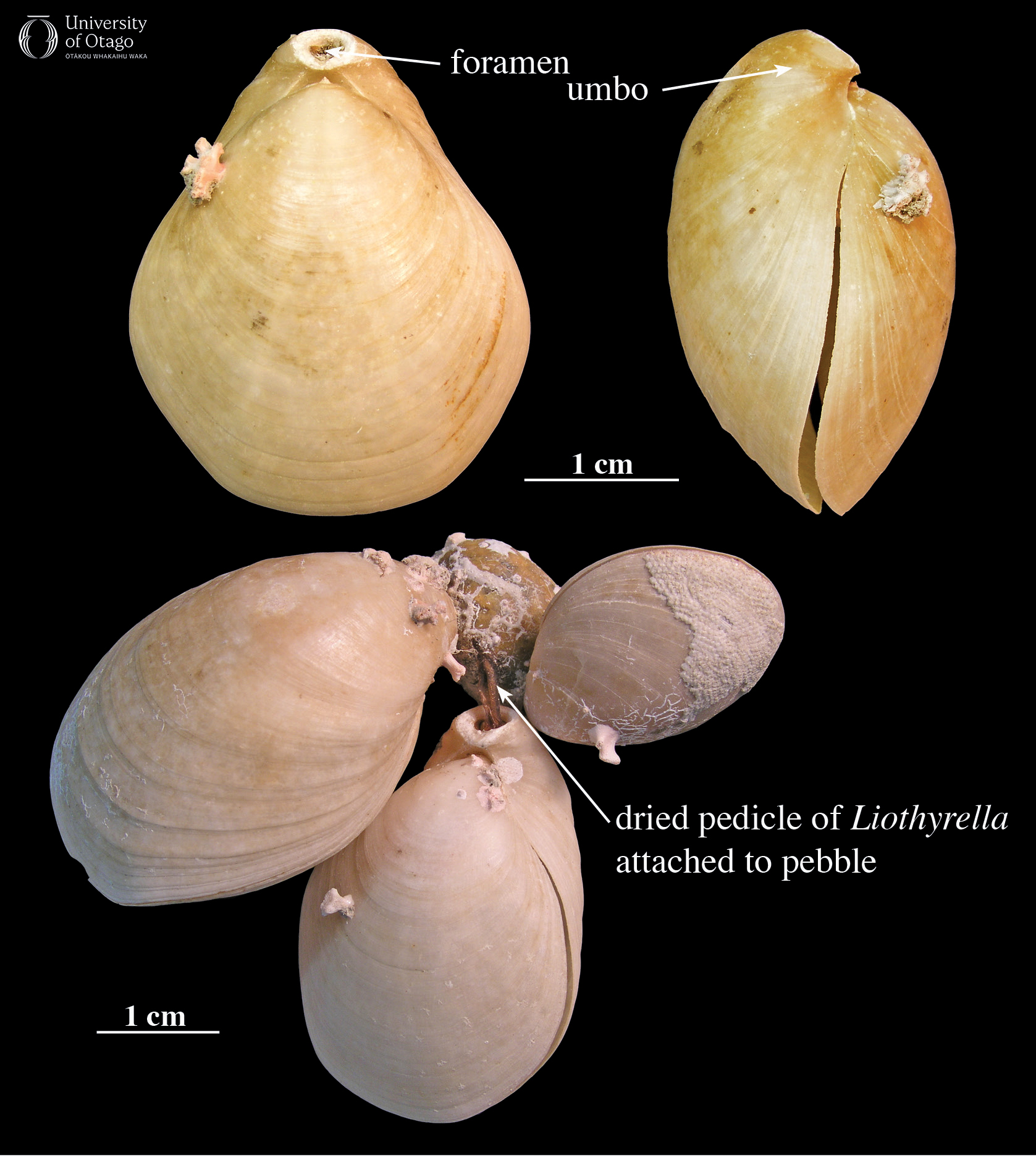Invertebrates: Brachiopods
Although they look at first glance like bivalve molluscs, brachiopods belong to a quite different phylum of marine animals. Sometimes called lampshells because of a fancied resemblance to a Roman oil lamp, brachiopods are solitary marine invertebrates that possess two valves of slightly different sizes. They are usually attached to the sea floor by a pedicle, although they may be cemented, free-lying or burrowers. They have bilateral symmetry, and are generally small, from 2 mm to 100 mm in length. The shell is usually calcareous or rarely phosphatic, and many brachiopods have tiny punctae in the shell. The main distinguishing feature of brachiopods is their method of feeding. They are suspension feeders, filtering minute plankton and organic particles from the surrounding seawater. The feeding organ, the lophophore, is supported inside the shell by short prongs (crura) or delicate short or long ribbon-like loops.

A visual guide to some of the terms used to describe brachiopods. Image credit: JH Robinson. |
They are found through the world’s oceans today, generally in small numbers – about 100 genera and 350 species are known. However, in the distant past, millions of brachiopods placed in 4,500 genera were some of the most abundant animals on the seabed – especially in the Paleozoic and Mesozoic.
Aotearoa New Zealand has some of the most studied living brachiopods because they are found in very shallow water, including in Otago Harbour, around Stewart Island and in the fiords. However, they have an excellent, though patchy fossil record here too, with specimens known from Cambrian rocks in the Cobb Valley, Devonian sediments near Reefton and in North West Nelson, the Permian of Western Southland, and Triassic and Jurassic strata in the Catlins, Hokonui Hills, and the western North Island between Port Waikato and Awakino. The Oligocene and Miocene limestones and greensands of the Canterbury Basin are also important where shellbeds made up entirely of brachiopods can occasionally be found.
Technical term for each articulating shell part. For example, the shells of bivalve molluscs and brachiopods are each made up of two valves.
A muscular stalk.
A body plan where an organism has a left side and a right side that are generally mirror images of one another.
Composed of calcium carbonate.
Composed of calcium phosphate.
Small opening (the plural is punctae).
Feeding by capturing and ingesting food particles that are suspended in water.
538.8 to 486.85 million years ago.
A sedimentary basin on the South Island of New Zealand.

